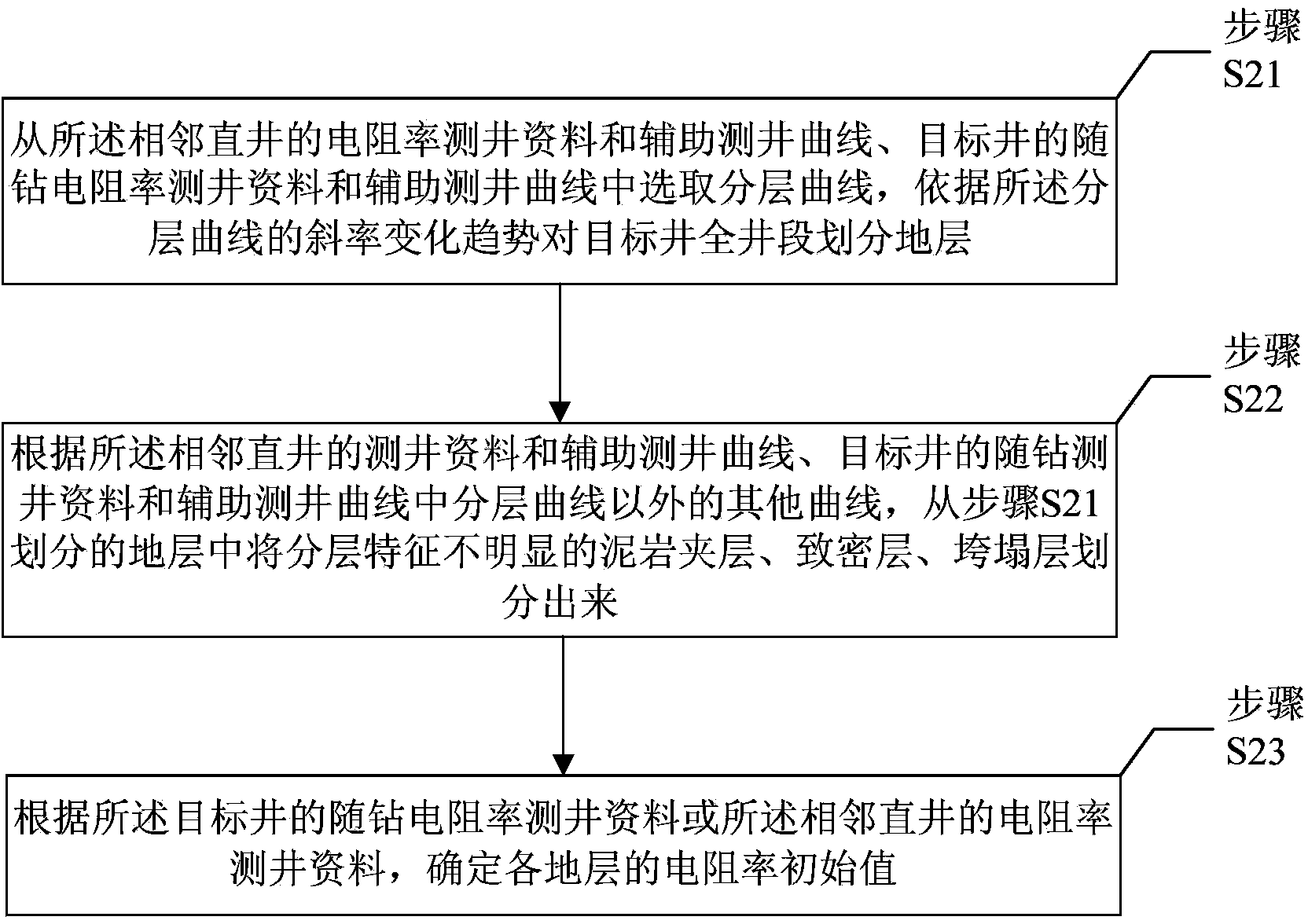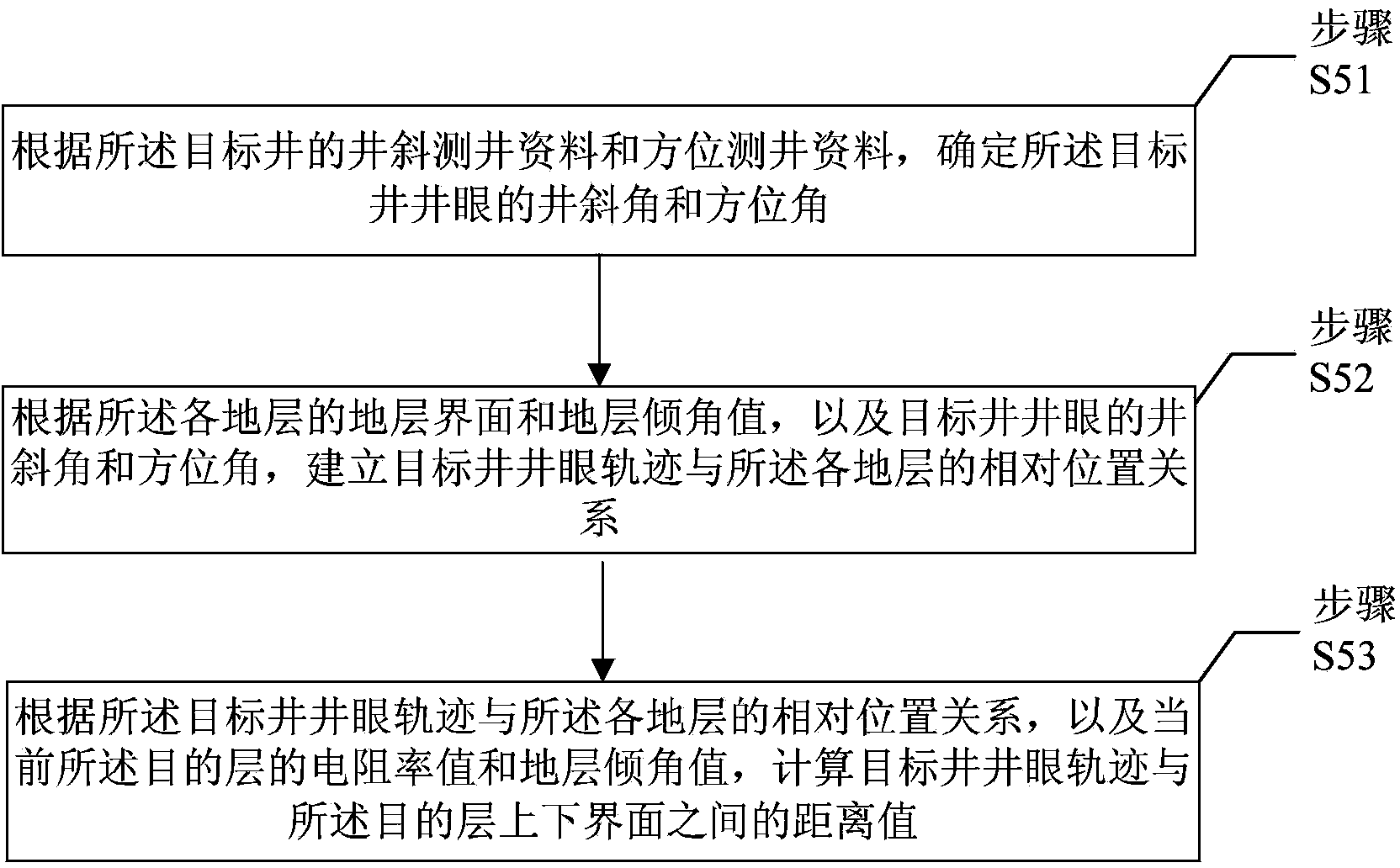Method for calculating distances between horizontal well borehole and upper and lower interfaces of stratum
A wellbore-to-horizontal well technology, applied in the direction of wellbore/well components, earthwork drilling, measurement, etc., can solve the problems that the perforation position is not optimal, and the oil recovery efficiency of horizontal wells cannot be fully improved.
- Summary
- Abstract
- Description
- Claims
- Application Information
AI Technical Summary
Problems solved by technology
Method used
Image
Examples
Embodiment 1
[0052] This embodiment provides a method for calculating the distance from the borehole of a horizontal well to the upper and lower boundaries of the formation, such as figure 1 As shown, the method includes:
[0053] Step S1, obtaining logging data and auxiliary logging curves of adjacent vertical wells, logging-while-drilling data and auxiliary logging curves of the target well, and seismic data in the area where the target well is located; Vertical wells within the set range.
[0054] The purpose of this step is to obtain various logging data, auxiliary logging curves and seismic data, so as to provide an accurate and reliable theoretical basis for the subsequent establishment of formation models, determination of formation dips, and generation of LWD simulation response curves.
[0055] Since the pilot hole section of the target well is basically in the same formation as the adjacent vertical well, the logging data of the pilot hole section of the target well is also basi...
Embodiment 2
[0107] In this embodiment, the distance between the horizontal wellbore and the upper and lower boundaries of the formation is calculated according to the method provided in Embodiment 1 by using the resistivity logging data while drilling. Figure 6 A diagram of the implementation results.
[0108] In this embodiment, the logging data of the resistivity logging while drilling tool commonly used in horizontal wells is selected as the processing object. Figure 6 It is divided into four quadrants. Quadrant 1 is the curve head, Quadrant 2 is the vertical projection of the curve, Quadrant 3 is the well trajectory and formation model, and Quadrant 4 is the horizontal display of the curve.
[0109] In quadrant four:
[0110] The first track is the natural gamma curve, and curve ① represents the natural gamma curve.
[0111] The second track is the LWD resistivity logging curve. P33H, P33L, A33H, and A33L represent the phase resistivity at a frequency of 2MHz, the phase resistivit...
PUM
 Login to View More
Login to View More Abstract
Description
Claims
Application Information
 Login to View More
Login to View More - R&D
- Intellectual Property
- Life Sciences
- Materials
- Tech Scout
- Unparalleled Data Quality
- Higher Quality Content
- 60% Fewer Hallucinations
Browse by: Latest US Patents, China's latest patents, Technical Efficacy Thesaurus, Application Domain, Technology Topic, Popular Technical Reports.
© 2025 PatSnap. All rights reserved.Legal|Privacy policy|Modern Slavery Act Transparency Statement|Sitemap|About US| Contact US: help@patsnap.com



